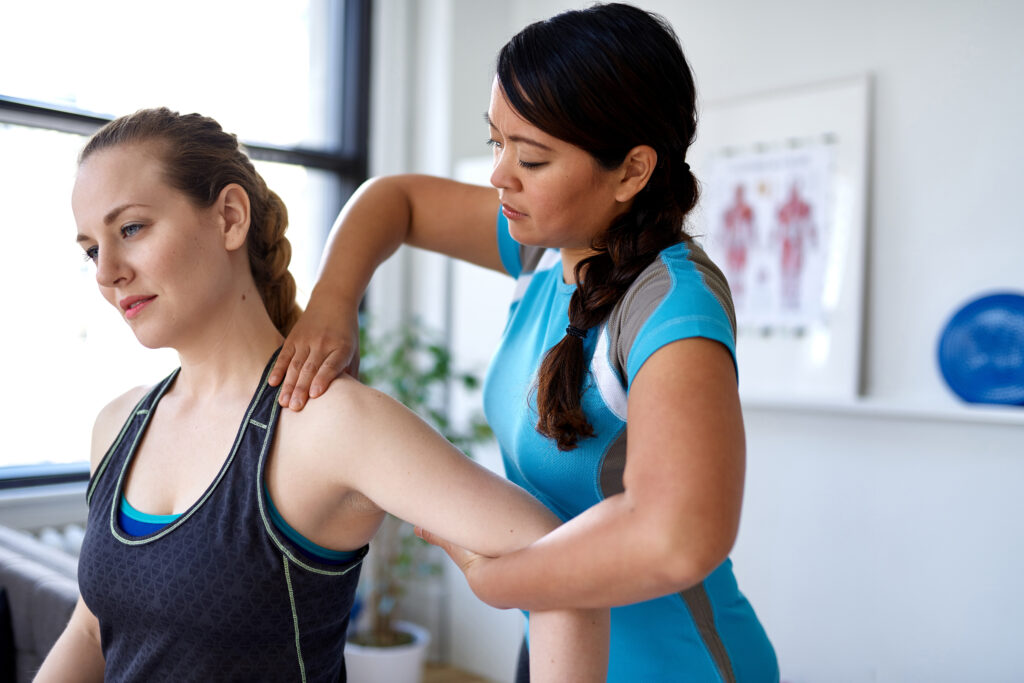Knee Pain: Causes of Knee Pain, DIY Relief, and Physiotherapy
As Ottawa’s premier physiotherapy services provider, we are aware knee pain is such an unwelcome companion which often disrupts the harmony of our patient’s daily activities. Whether triggered by an unforeseen injury or the persistent wear and tear of time, or the challenges of conditions like arthritis, effective solutions become imperative. In this journey towards relief, physiotherapy emerges as a guiding light. Our Physiotherapists, are armed with expertise and specialized techniques, not only alleviate knee pain but also illuminate a path towards sustained recovery and improved mobility.
Causes of Knee Pain
Knees bear the brunt of various issues. Injuries, ranging from ligament tears to fractures, are primary culprits. Conditions like osteoarthritis and rheumatoid arthritis trigger inflammation, causing stiffness and pain. Overuse, often seen in high-impact activities, and even the burden of excess weight can strain knee joints.
Home Remedies for Knee Pain
1. R.I.C.E. Method: Begin with the basics – Rest, Ice, Compression, and Elevation. This fundamental approach reduces inflammation and kick starts the healing process.
2. Warm Compress: Apply a warm compress to soothe muscles and ease knee pain. This simple remedy can go a long way in enhancing comfort and promoting mobility.
3. Low-Impact Exercises: Embrace activities like swimming or cycling to strengthen muscles without adding stress to your knee joints. These exercises promote overall joint health.
4. Weight Management: Maintaining a healthy weight is crucial. Shedding excess pounds alleviates stress on knee joints, providing relief from pain and supporting long-term joint health.
Role of Physiotherapy
1. Customized Exercise Programs: Physiotherapists are architects of tailored exercise routines, focusing on strengthening the muscles around the knee, enhancing stability, and reducing pain.
2. Joint Mobilization: Through gentle movements, physiotherapists unlock the potential for improved joint function and flexibility, paving the way for increased mobility.
3. Electrotherapy Techniques: Modalities like ultrasound or TENS, skillfully administered by professionals, assist in pain management, offering relief and accelerating the healing process.
4. Education on Ergonomics: Physiotherapists impart valuable knowledge on proper posture and body mechanics, empowering patients to prevent future knee issues.
The Illumination of Physiotherapy
Beyond the exercises and techniques, physiotherapy brings a unique illumination to the journey of recovery. It’s a supportive partnership, through which professionals guide individuals not just through exercises but through a holistic understanding of their body’s needs. The encouragement and expertise offered by physiotherapists create a lightness in the steps towards recovery, turning the challenging road to healing into a well-guided, empowering stroll. Knee pain doesn’t have to be an insurmountable obstacle.
By understanding the causes and combining effective home remedies with the expertise of physiotherapy, individuals can embark on a journey toward improved mobility and a pain-free life. A holistic approach is key to conquering knee discomfort and embracing an active lifestyle. With these tips in mind, you can take proactive steps towards achieving lasting relief and optimal knee health. Remember that, the key to a healthy and pain-free life lies in a comprehensive strategy that combines home care, professional guidance, and a commitment to overall joint well-being.
TheraTouch Physiotherapy on Carling Ave, Ottawa offers General, Sports & Pelvic Health Physiotherapy and can help with Knee pain.






